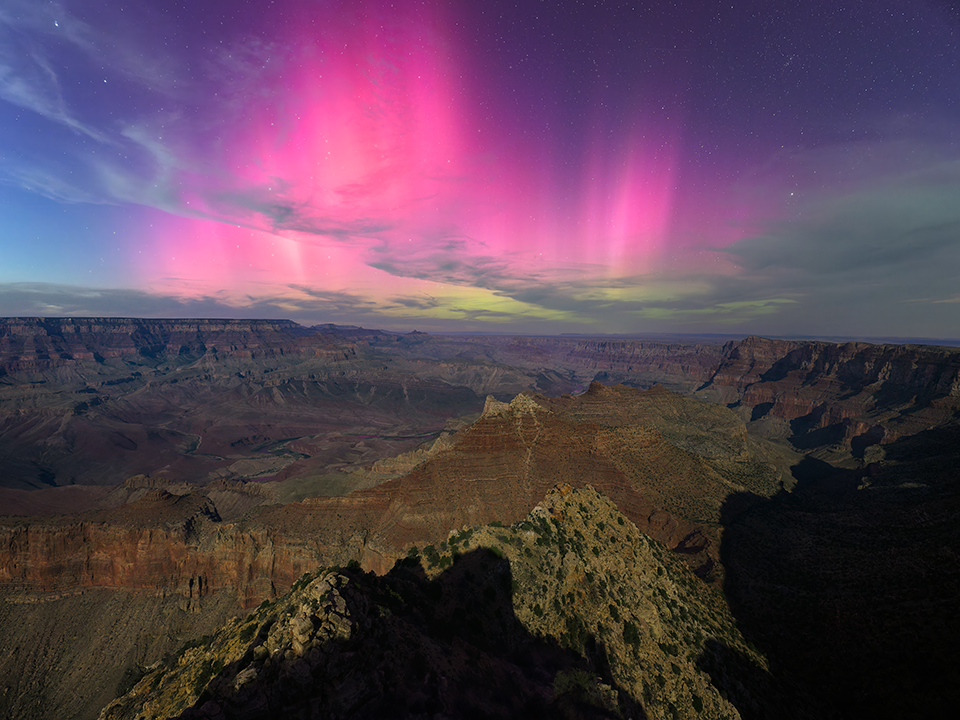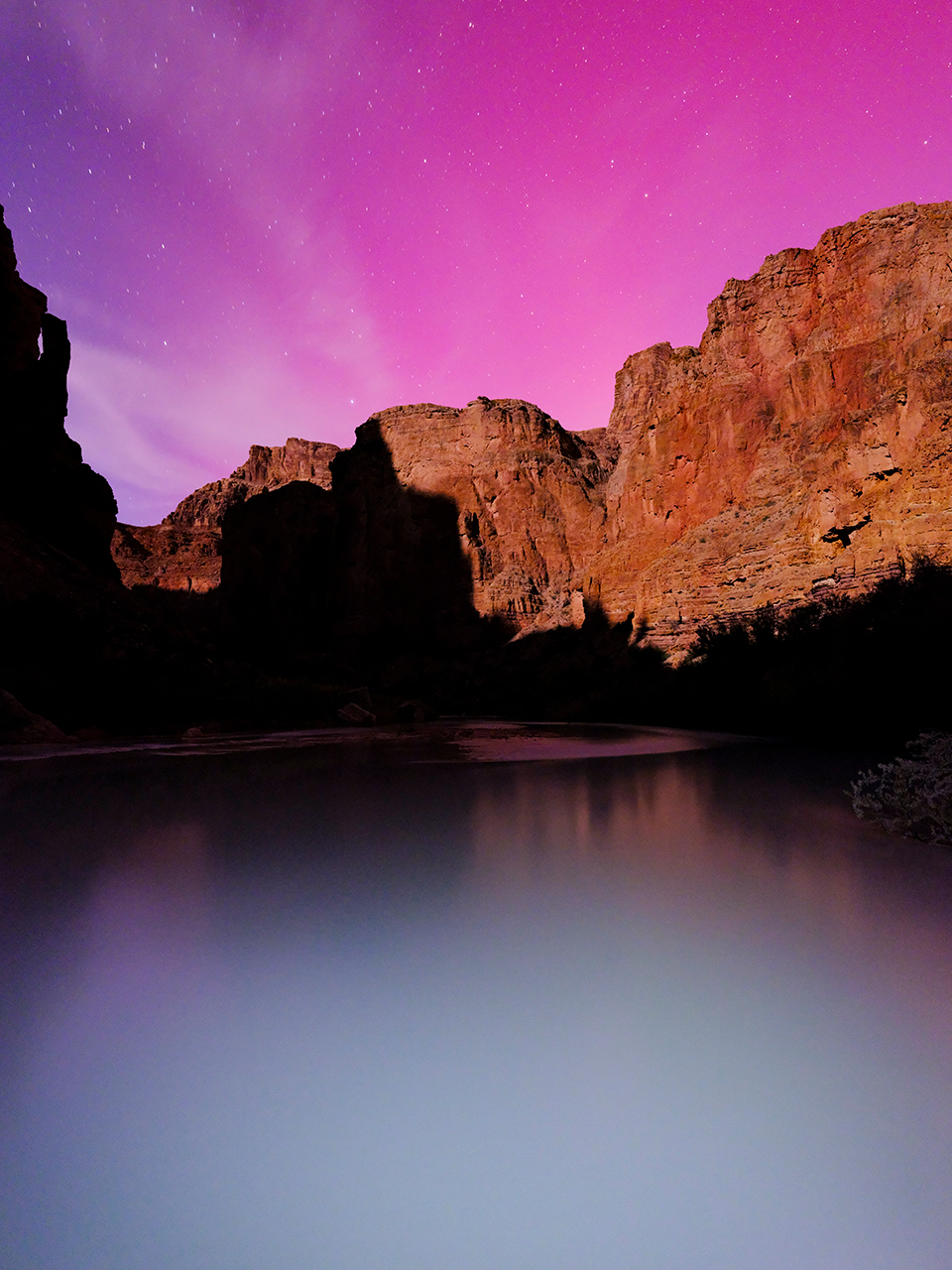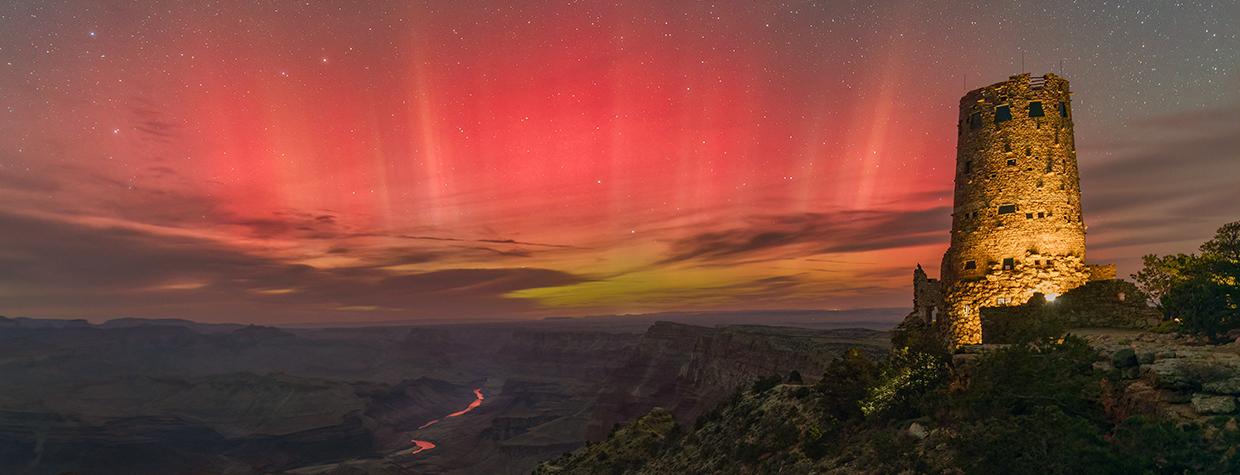Galileo named the aurora borealis, or the northern lights, in the early 17th century, honoring Aurora, Roman goddess of the dawn, and Boreas, Greek god of the cold north wind. In the Southern Hemisphere, the phenomenon is known as aurora australis.
We know now that the aurora is the result of solar storms that disrupt the Earth’s magnetosphere. Large disruptions alter the trajectory of charged particles in plasma. The particles precipitate into our upper atmosphere and get excited, emitting light. This is an oversimplification of the science behind the aurora — an oversimplification my son will undoubtedly roll his eyes over.
He’s a boy who, from a young age, looked to the skies, memorizing the body shapes of planes, reading about their engines, learning about their applications in times of war and times of peace. When he started to look to the stars, too, his telescope accompanying us on road trips across the western United States, I began to wonder if we shared some genetic draw toward learning as much as we could about the unknowable corners of the universe. He reads books. I watch NASA livestreams to feed my own curiosity.
When the space shuttle Challenger exploded in January 1986, I was about to turn 4, and my mom and I tuned in from our brick-walled living room in New Orleans. I think about that morning sometimes and wonder why I remember it so vividly. I guess it’s because of the magic of it all, the innocence of it, the idea of the pulling and shifting of stars, the intricacies of growing up — and even of realizing something was wrong when it was supposed to be beautiful.

It was abnormally cold in the southeastern United States that morning, and the O-ring seals in the shuttle’s right solid rocket booster were stiff. Shortly after liftoff, the seals failed, initiating a catastrophic chain reaction that resulted in the deaths of seven crew members, including a teacher, Christa McAuliffe, who was aboard as part of the government’s Teachers in Space program.
For 73 seconds, that shuttle flew toward space, toward its mission to study Halley’s comet and deploy a communications satellite. And then it fell.
If I close my eyes, I can see the shuttle break apart. I can see the smoke, the way it curled and choked and expanded, tendrils dripping like paint across the Cape Canaveral sky. I remember the tears in my mom’s eyes, then little else of the immediate aftermath.
Decades later, in an artificially ice-cold hotel room in Los Gatos, California, I watched Nova and cried, the birth and death of stars a concept so tender that, in those moments, it seemed too beautiful to be real.
Two years after that, we could see the aurora borealis in Arizona.
In Finnish lore, arctic foxes run so quickly that when their tails brush against the mountains, they create sparks that light up the sky. The aurora borealis, in the Finnish language, is revontulet, the same word used to identify the “fire foxes” responsible for the blaze. The Vikings believed the lights were the reflections of the Valkyries leading warriors to Odin, the chief god and ruler of Asgard.
There are mixed feelings, though, about the lights among the Indigenous peoples of North America. Some stories depict the lights as torches carried by spirits to lead the recent dead to the afterlife. Others indicate fear, a sense that the lights were omens of pestilence, war and death.

A powerful geomagnetic storm illuminated the aurora over parts of Arizona on October 10, 2024, and several photographers were at the Grand Canyon to experience it. Adam Schallau was one of them. Fifteen years ago, Schallau began a journey of exploration, chasing light at the Canyon from rim to river.
“I chose to dedicate myself to photographing the Canyon, spending an average of 80 days a year in the park to make photographs representing the incredible diversity of the landscape and ecosystem,” he says. “Along the way, I’ve been witness to many incredible moments when the power of nature combines with the immensity of the Canyon to make you feel small and insignificant — and yet, at the same time, spiritually fulfilled.”
When the aurora appeared in Arizona, Schallau knew he wanted to experience it with his naked eye as much as with his lens.
“As the last light of the day faded into night, a faint wash of magenta began to appear in the northern sky, and within 15 minutes, the sky was filled with magenta pillars overhead and green on the distant horizon,” he recalls. “For over two hours, I stood on the Canyon’s rim, watching and photographing the aurora as the shadowy depths of the Canyon gave way to the light of the moon. Watching the aurora dance across the night sky has been one of the most uniquely spiritual experiences I have been fortunate to have witnessed at the Grand Canyon.”
My son and I haven’t seen the aurora, but we have touched the sacred earth of the Canyon. From terrestrial footing, we are learning each day what it means to be small in the vastness of space.
If the aurora returns to Arizona, we’ll find it, I think. And I’ll let him explain all the science.

